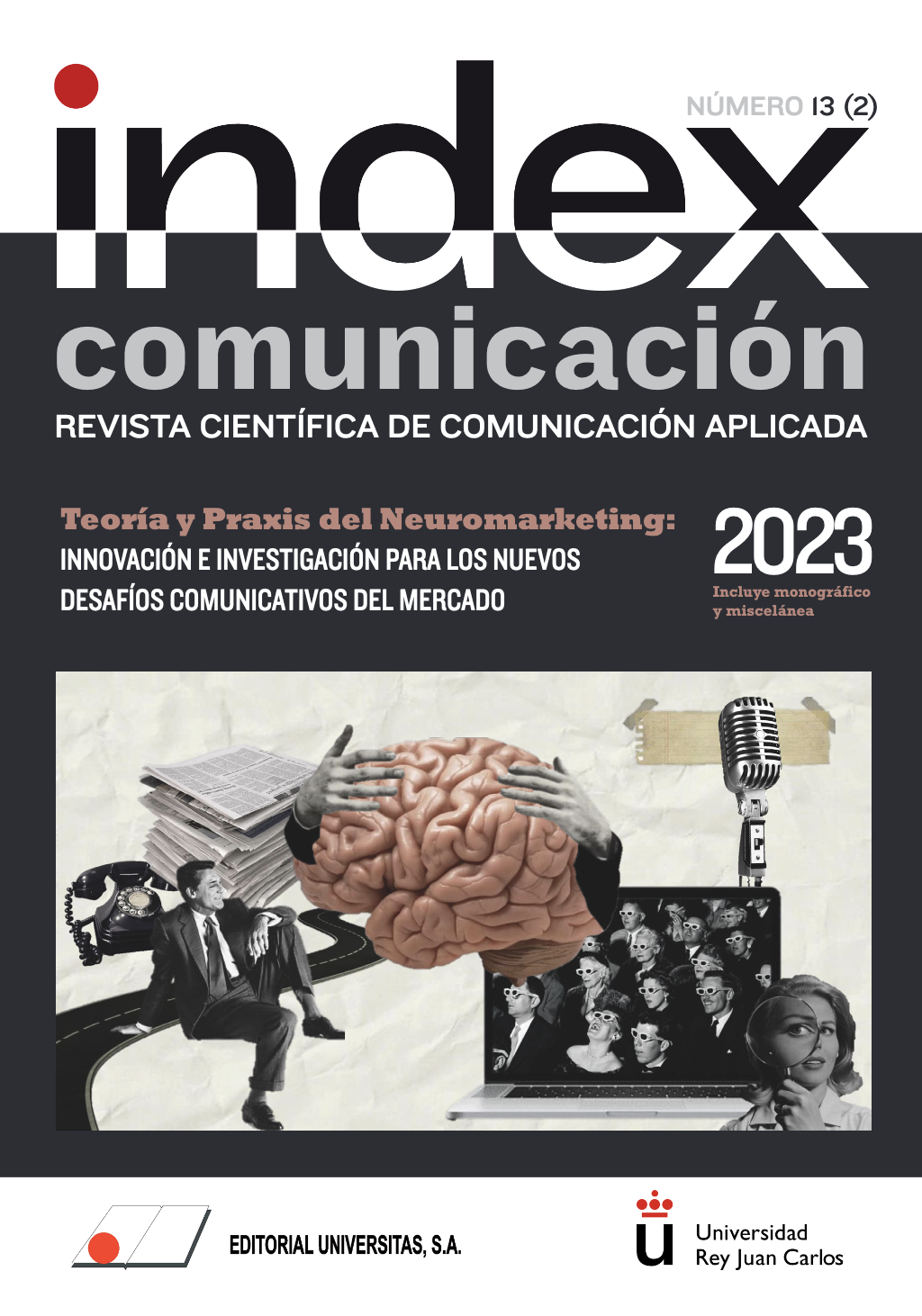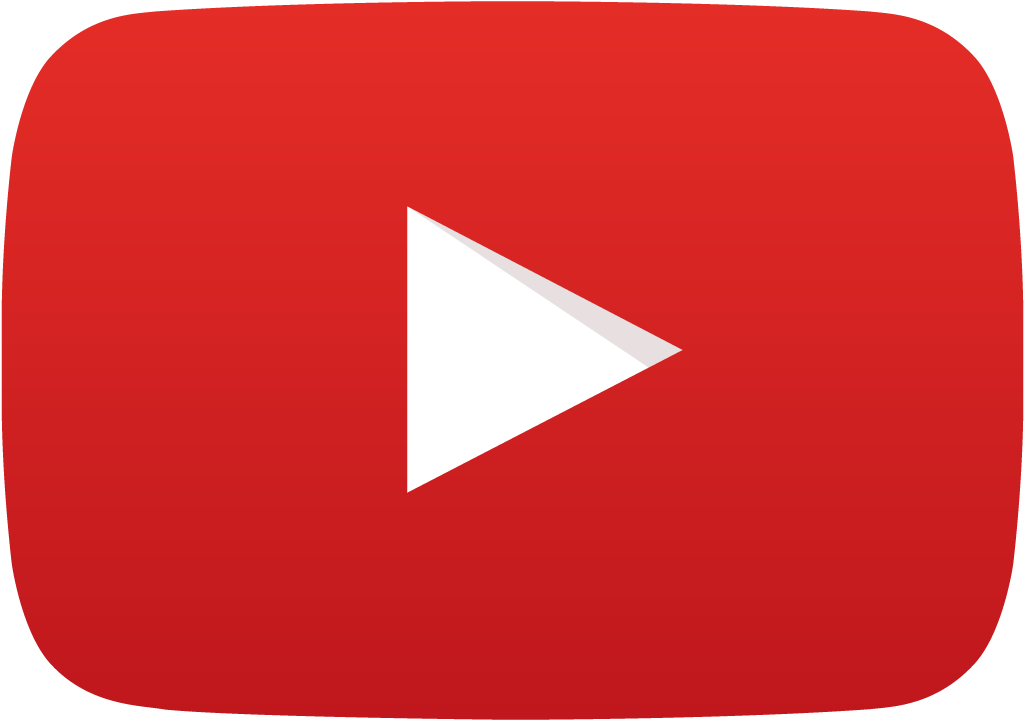Nuevas narrativas audiovisuales mixtas en el sector cinematográfico a través de youtubers
DOI:
https://doi.org/10.33732/ixc/13/02NuevasPalabras clave:
Prosumidor digital, series, cine, narrativas mixtas, Youtubers, PartnersResumen
Se investigan las nuevas narrativas de los principales canales de youtubers relacionados con la industria cinematográfica. Se propone un modelo que combina la recogida e interpretación de datos cuantitativos y cualitativos con el análisis del contenido, la etnografía digital y los métodos de observación y exploración semiótica/discursiva. Mediante la cuantificación, se deduce cuáles son las tipologías de las nuevas narrativas audiovisuales más demandadas, se discute acerca del tipo de contenido generado a partir de terceros y de las estrategias actuales de los youtubers del sector cinematográfico para mantener afluencia de seguidores. Se evidencia la existencia de narrativas mixtas que triangulan el contenido creado por la industria cinematográfica con el del autor y con el impulsado por el fandom. Concluimos que las creaciones audiovisuales de los youtubers cuyos canales están centrados en la industria cinematográfica están acercando a las personas a contenidos educativos sobre cine desde diferentes perspectivas y campos, así como están expandiendo el relato original del producto cinematográfico a nuevas narrativas y formatos que no existían anteriormente y que podrían ser considerados por la propia industria cinematográfica.
Métricas
Citas
AGUADED, I. (2015). La educación en medios de comunicación. Panorama y perspectivas. KR.
AGUJEROS DE GUION (2022). Listas de reproducción [canal de YouTube]. YouTu-be. Recuperado el 20 de abril de 2022, de
ALBALADEJO ORTEGA, S. y SÁNCHEZ MARTÍNEZ, J. (2019). El ecosistema mediático de la ficción contemporánea: relatos, universos y propiedades intelectuales a través de los transmedial worlds. Icono 14, 17(1), 15-38. https://doi.org/10.7195/ri14.v17i1.1241
AMELIO ORTIZ, N. (2022). Listas de reproducción [canal de YouTube]. YouTube. Recuperado el 20 de abril de 2022, de https://tinyurl.com/5352tkx2
APARICI, R. y GARCÍA-MARÍN, D. (2018). Prosumidores y emirecs: Análisis de dos teorías enfrentadas. Comunicar, 55, 71-79. https://doi.org/10.3916/C55-2018-07
ARJONA MARTÍN, J. B. (2021). Convergencia de medios. Plataformas audiovisuales por Internet (Over-The-Top) y su impacto en el mercado audiovisual en Es-paña. Revista Latina De Comunicación Social, (79), 35-52. https://doi.org/10.4185/RLCS-2021-1496
BARLOVENTO COMUNICACIÓN (15 de mayo de 2022). Barómetro TV-OTT 1a ola 2022. Barlovento Comunicación. https://tinyurl.com/2tkynpap
BERGER, A. (2016). Media and communication research methods: an introduc-tion to qualitative and quantitative approaches. SAGE.
BURGESS, J. (2012). YouTube and the formalisation of amateur media. En HUNTER, D., LOBATO, R., RICHARDSON, M. y THOMAS, J. (Ed.), Amateur media: Social, cul-tural and legal perspectives, (pp. 53-58). Routledge. https://doi.org/10.4324/9780203112021
CASTRO-HIGUERAS, A., PEREZ-RUFI, J.P., TORRES-MARTÍN, J.L., CARBALLEDA-CAMACHO, M. y DE AGUILERA-MOYANO, M. (2022). Streaming de vídeo, cómo las plataformas condicionan el comportamiento y los usos expresivos de los usuarios de sus apps. Revista Latina de Comunicación Social, 80, 1-20. https://www.doi.org/10.4185/RLCS-2022-1545
CIAMMELLA, F., CIOFALO, G. y LEONZI, S. (2019). "It's a trap". Transmedia Screen Storytelling: from the immersive experience to participatory interactivity. H-ermes. Journal of Communication, 15, 89-110. http://dx.doi.org/10.1285/i22840753n15p89
CHAVES, V. E. J. (2012). El estudio de caso y su implementación en la investiga-ción. Revista internacional de investigación en ciencias sociales, 8(1), 141-150. https://tinyurl.com/39jjryzp
CHTOUKI, Y., HARROUD, H., KHALIDI, M. y BENANI, S. (2012). The impact of YouTube videos on the student's learning. International Conference on Information Technology Based Higher Education and Training (ITHET), 1-4. https://doi.org/10.1109/ITHET.2012.6246045
DE LA FUENTE PRIETO, J., LACASA DÍAZ, P. y MARTÍNEZ-BORDA, R. (2019). Adolescen-tes, redes sociales y universos transmedia: la alfabetización mediática en contextos participativos. Revista Latina de Comunicación Social, 74, 172-196. https://doi.org/10.4185/RLCS-2019-1326
DELGADO, M. (2015). Urban Youth and Photovoice: Visual Ethnography in Ac-tion. Oxford University Press.
DEUZE, M. y PRENGER, M. (2019). 1. Making Media: Production, Practices, and Professions. En DEUZE, M. y PRENGER, M. (Ed.), Making Media: Production, Practices, and Professions (pp. 11-28). Amsterdam University Press. https://doi.org/10.1515/9789048540150-001
DÍAZ-LUCENA, A., ÁLVAREZ MONZONCILLO, J. y MORA DE LA TORRE, V. (2022). YouTube y el nuevo rumbo de la prensa española. Revista Latina de Comuni-cación Social, 80, 47-67. https://doi.org/10.4185/RLCS-2022-1549
DUFFETT, M. (2013). Understanding fandom: an introduction to the study of me-dia fan culture. Bloomsbury.
ESTABLÉS, M.J., GUERRERO-PICO, M. y CONTRERAS-ESPINOSA, R.S. (2019). Gamers, writers and social media influencers: professionalization processes among teenagers. Revista Latina de Comunicación Social, 74, 214-236. https://doi.org/10.4185/RLCS-2019-1328en
FERNÁNDEZ, P. (2014). Consumos culturales en América Latina y la emergencia del prosumidor: un recorrido conceptual desde la sociedad de la informa-ción. Revista Communication Papers, 4 (3), 87-100. http://dx.doi.org/10.33115/udg_bib/cp.v3i04.22130
FILMSPLAY (2022). Listas de reproducción [canal de YouTube]. YouTube. Recu-perado el 20 de abril de 2022, de https://tinyurl.com/2p8e3xef
FREIRE, A. (2018). La nueva narrativa transmedia de la generación Google Kids. UOC.
FREIRE-SÁNCHEZ, A. y VIDAL-MESTRE, M. (2022). El concepto de antihéroe o anti-heroína en las narrativas audiovisuales transmedia. Cuadernos.Info, (52), 246–265. https://doi.org/10.7764/cdi.52.34771
GARCÍA-GALERA, M. C. (2014). Prosumidores mediáticos. Cultura participativa de las audiencias y responsabilidad de los medios. Comunicar, 22(43), 10-13. https://doi.org/10.3916/C43-2014-a2
GABELAS, J.A. y MARTA-LAZO, C. (2016). Comunicación digital. Un modelo basado en el factor relacional. UOC.
GOSCIOLA, V. y TAGE VERISSIMO, M. (2018). Mediatización por los jóvenes en la expansión narrativa del Universo Cinemático Marvel. Chasqui. Revista Lati-noamericana de Comunicación, 0(137), 113-130. https://doi.org/10.16921/chasqui.v0i137.3456
GUERRERO, M. (2014). Webs televisivas y sus usuarios: un lugar para la narrati-va transmedia. Los casos de “Águila Roja” y “Juego de Tronos” en España. Comunicación y Sociedad Nueva época, (21), 239-267. http://dx.doi.org/10.32870/cys.v0i21.578
HERRERO-DÍAZ, P., RAMOS-SERRANO, M. y NÓ, J. (2016). Los menores como usua-rios creadores en la era digital: del prosumer al creador colaborativo. Revi-sión teórica 1972-2016. Revista Latina de Comunicación Social, 71, 1.301-1.322. https://doi.org/10.4185/RLCS-2016-1147
HOLT, J. y PERREN, A. (2019). 2. Media Industries: A Decade in Review. En DEUZE M. y PRENGER, M. (Ed.), Making Media: Production, Practices, and Professions (pp. 31-44). Amsterdam University Press. https://doi.org/10.1515/9789048540150-002
HYUNG, J. N., YONG, H. K. y HYUN, J. J. (2023). The Impact of YouTube on Present and Future Firm Value: Using Unstructured Text Analysis. Sustainability, 15(5), 4346. https://doi.org/10.3390/su15054346
IRSYADI, A. N. y MADAMIDOLA, O. (2023). Media in the Cultural Dissemination: A Study of Cultural Filming on YouTube. Arif, 2(2), 308-322. https://journal.unj.ac.id/unj/index.php/arif/article/view/31907
JAUREGUI CABALLERO, A. y ORTEGA PONCE, C. (2020). Narrativas transmediáticas en la apropiación social del conocimiento. Revista Latina De Comunicación Social, (77), 357-372. https://doi.org/10.4185/RLCS-2020-1462
JENKINS, H. (2006). Convergence culture: Where old and new media collide. NYU press.
KOTLER, P., KARTAJAYA, H. y SETIAWAN, I. (2018). Marketing 4.0: Transforma tu estrategia para atraer al consumidor digital. Acción Empresarial.
LACASA DÍAZ, P. (2018). Expresiones del futuro: cómo se comunicarán las nuevas generaciones. Morata.
LASTRA, A. (2016). El poder del prosumidor. Identificación de sus necesidades y repercusión en la producción audiovisual transmedia. Icono 14, (14), 71-94. https://doi.org/10.7195/ri14.v14i1.902
MAQUIAVELLO, J. (2022). Listas de reproducción [canal de YouTube]. YouTube. Recuperado el 20 de abril de 2022, de https://tinyurl.com/2dv23en7
MCCRIDDLE, M. (2014). The ABC of XYZ: Understanding the Global Generations. University of New South Wales Press.
MIRANDA-GALBE, J., CABEZUELO-LORENZO, F. y LÓPEZ-MEDEL, I. (2021). Analytical Model of Transmedia Storytelling Ecosystems in Audiovisual Fiction: The Spanish Model of The Ministry of Time. Communication & Society, 34(1), 1-13. https://doi.org/10.15581/003.34.1.1-13
MOLPECERES ARNÁIZ, S. y RODRÍGUEZ FIDALGO, M.I. (2014). La inserción del dis-curso del receptor en la narrativa transmedia: el ejemplo de las series de te-levisión de ficción. Historia y Comunicación Social, (19), Núm. Especial Fe-brero, 31-42. http://dx.doi.org/10.5209/rev_HICS.2014.v19.45008
PÉREZ-RODRÍGUEZ, A. (2020). Homo sapiens, homo videns, homo fabulators. La competencia mediática en los relatos del universo transmedia. Icono 14, 18(2), 16-34. http://dx.doi.org/10.7195/ri14.v18i2.1523
RAYA, A. (11 de noviembre de 2021). YouTube quita el número de "no me gusta" de los vídeos, y los usuarios no se lo han tomado muy bien. El economista. https://tinyurl.com/u3vdrrba
RODRÍGUEZ-FERRÁNDIZ, R., TUR-VIÑES, V. y MORA CONTRERAS, K. (2016). The Tube on YouTube: TV Series, Media Strategies, and User Tactics in a Transmedia Environment. International Journal of Communication, 10(2016), 1991–2013. https://tinyurl.com/yym87w6k
ROSE, G. (2016). Visual methodologies: an introduction to researching with vis-ual materials. SAGE Publications Ltd.
SÁNCHEZ-LÓPEZ, I., PÉREZ-RODRÍGUEZ, A. y FANDOS-IGADO, M. (2019). Com-educational Platforms: Creativity and Community for Learning. Journal of New Approaches in Educational Research, 8(2), 214-226. http://dx.doi.org/10.7821/naer.2019.7.437
SCOLARI, C. A. (2018). Teens, media and collaborative cultures: exploiting teens' transmedia skills in the classroom. Universitat Pompeu Fabra.
SCOLARI, C. A. y FRATICELLI, D. (2019). The case of the top Spanish YouTubers: Emerging media subjects and discourse practices in the new media ecology. Convergence, 25(3), 496–515. https://doi.org/10.1177/1354856517721807
SCOLARI, C. A., BERTETTI, P. y FREEMAN, M. (2014). Transmedia archaeology: sto-rytelling in the borderlines of science fiction, comics and pulp magazines. Palgrave Macmillan.
SHUANGDAN, N. (2023). Exploring the Preferences of US YouTube Users and Fac-tors Related to YouTube Uploader’s Revenue. Studies in Social Science & Hu-manities, 2(1), 43–54.
https://www.paradigmpress.org/SSSH/article/view/398
SIXTO-GARCÍA, J., RODRÍGUEZ-VÁZQUEZ, A. I. y SOENGAS-PÉREZ, X. (2021). Modelo de análisis para canales de YouTube: aplicación a medios nativos digitales. Re-vista Latina de Comunicación Social, 79,1-16. https://doi.org/10.4185/RLCS-2021-1494
SNELSON, CH. (2011). YouTube across the disciplines: a review of the literature. MERLOT Journal of Online Learning and Teaching, 7(1), 159-169. http://jolt.merlot.org/vol7no1/snelson_0311.pdf
SOLER PUJALS, P. y ENRIQUE JIMÉNEZ, A. M. (2012). Reflexión sobre el rigor científi-co en la investigación cualitativa. Estudios sobre el Mensaje Periodístico, 18, 879-888. https://doi.org/10.5209/rev_ESMP.2012.v18.40966
SUÁREZ-ÁLVAREZ, R. y GARCÍA-JIMÉNEZ, A. (2021). Centennials en TikTok: tipolo-gía de vídeos. Análisis y comparativa España-Gran Bretaña por género, edad y nacionalidad. Revista Latina de Comunicación Social, (79), 1-22. https://doi.org/10.4185/RLCS-2021-1503
TE LO RESUMO. (2022). Listas de reproducción [canal de YouTube]. YouTube. Recuperado el 20 de abril de 2022, de https://tinyurl.com/2ya65hh7
TOFFLER, A. (1990). El cambio del poder. Plaza y Janés.
VÁZQUEZ-HERRERO, J., GONZÁLEZ-NEIRA, A. y QUINTAS-FROUFE, N. (2019). La au-diencia activa en la ficción transmedia: plataformas, interactividad y medi-ción. Revista Latina De Comunicación Social, (74), 73-93. https://doi.org/10.4185/RLCS-2019-1322
VIDAL-MESTRE, M. y FREIRE-SÁNCHEZ, A. (2022). Creadora, antiheroína y gamer: el triple rol de las nativas digitales en la industria del videojuego y sus redes sociales. En Del Olmo Arriaga, J. L.; Ruiz Viñals, C. y Vázquez, M. (2022). Muje-res y redes sociales. Eunsa Astrolabio.
YUCRA-QUISPE, L. M., ESPINOZA-MONTOYA, C., NÚÑEZ-PACHECO, R. y AGUADED, I. (2022). De consumidores a prosumidores: la narrativa transmedia en dos juegos móviles para adolescentes y jóvenes. Revista De Comunicación, 21(1), 433–450. https://doi.org/10.26441/RC21.1-2022-A22
ZHANG, F. y ZHU, L. (2021). Promoting business model innovation through social media strategic capability: A moderated mediation model. European Management Journal, 40(1), 56-66. https://doi.org/10.1016/j.emj.2021.02.003
Publicado
Cómo citar
Número
Sección
Licencia
Derechos de autor 2023 Montserrat Vidal-Mestre (Autor/a)

Esta obra está bajo una licencia internacional Creative Commons Atribución-NoComercial 4.0.
Los autores que publican en esta revista están de acuerdo con los siguientes términos:
Los autores conservan los derechos de autor y garantizan a la revista el derecho de ser la primera publicación del trabajo al igual que licenciado bajo una Licencia Creative Commons Atribución-NoComercial 4.0 Internacional que permite a otros compartir el trabajo con un reconocimiento de la autoría del trabajo y la publicación inicial en esta revista, sin finalidad comercial.
Los autores pueden establecer por separado acuerdos adicionales para la distribución no exclusiva de la versión de la obra publicada en la revista (por ejemplo, situarlo en un repositorio institucional o publicarlo en un libro), con un reconocimiento de su publicación inicial en esta revista.
Se permite y se anima a los autores a difundir sus trabajos electrónicamente (por ejemplo, en repositorios institucionales o en su propio sitio web) antes y durante el proceso de envío, ya que puede dar lugar a intercambios productivos, así como a una citación más temprana y mayor de los trabajos publicados (Véase The Effect of Open Access) (en inglés).















